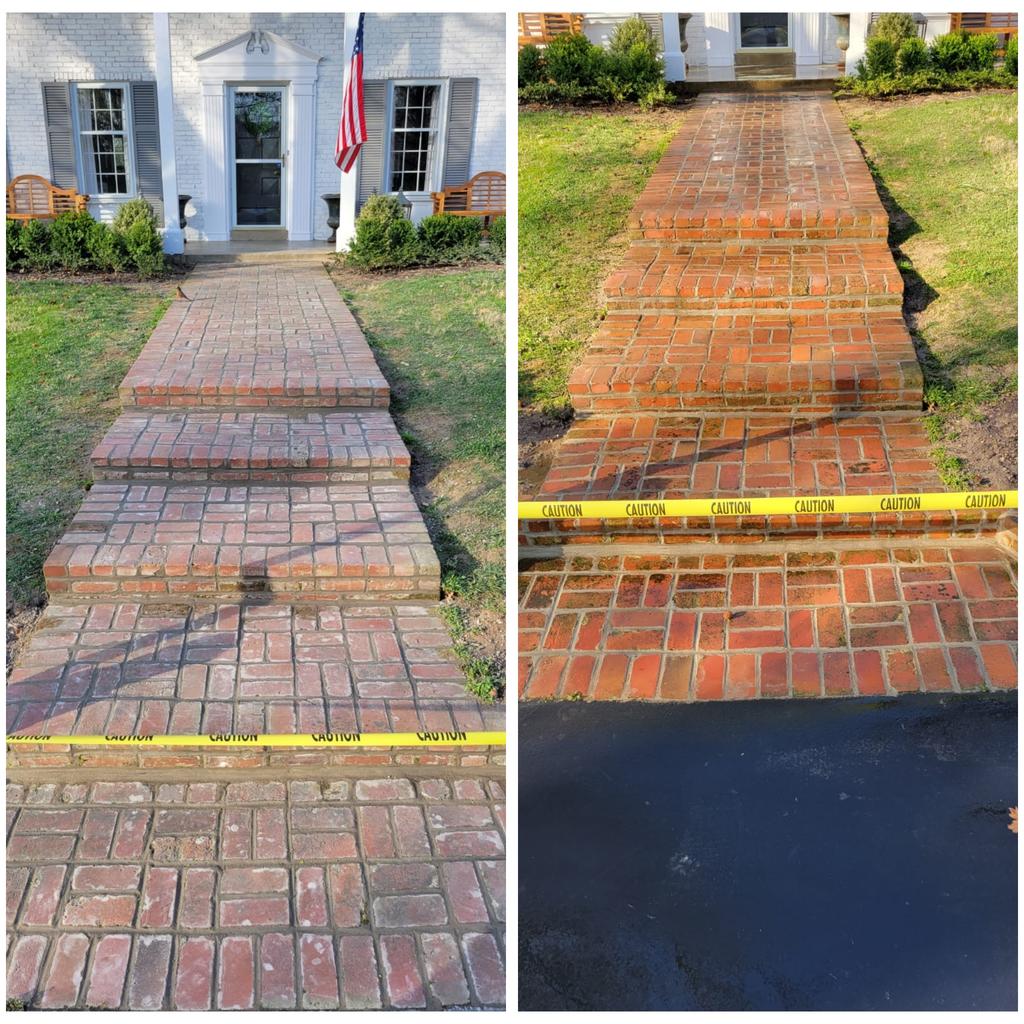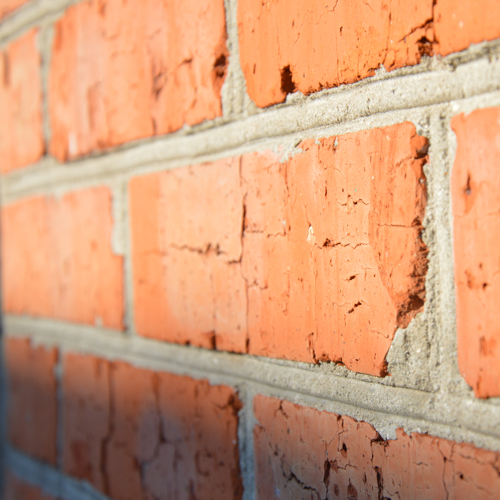. Experience Exceptional Workmanship with Raul's Tuckpointing St. Louis MO Services.
Wiki Article
Achieve Impeccable Brickwork Remediation With Top-Quality Tuckpointing
When it involves restoring brickwork, accomplishing remarkable outcomes needs a careful technique and premier products. Tuckpointing, a technique that involves fixing and bring back mortar joints, plays a crucial function in making sure the architectural stability and visual allure of block buildings. In this discussion, we will certainly discover the benefits of tuckpointing, the actions involved in the process, the importance of knowledgeable craftsmen, and how to choose the right materials for a successful remediation project. In the process, we will certainly likewise offer upkeep tips to help you protect the longevity of your recently recovered brickwork. So, allow's dig into the globe of tuckpointing and discover how it can transform your block frameworks.Advantages of Tuckpointing
Over time, the mortar joints in between blocks can wear away due to weathering and age, leaving the bricks prone to damage. Tuckpointing includes eliminating the shabby mortar and changing it with fresh mortar, efficiently bring back the stamina and stability of the brickwork.One more benefit of tuckpointing is its capability to boost the aesthetic charm of brickwork. As mortar ages, it can come to be discolored or harmed, diminishing the total look of the blocks. Raul's Tuckpointing St. Louis MO. Tuckpointing allows for the elimination of unsightly mortar and the application of new mortar that matches the color and texture of the original brickwork, resulting in a seamless and visually appealing finish
Furthermore, tuckpointing assists to avoid additional damages to brickwork. By replacing worn-out mortar, tuckpointing seals the joints in between blocks, protecting against water and moisture from leaking in. This helps to secure the bricks from damage triggered by cold and thawing cycles, eventually prolonging the life of the brickwork.
Steps Associated With Tuckpointing Refine
To start the tuckpointing procedure, careful prep work and evaluation of the brickwork is needed. This action is important to make sure that the reconstruction is done successfully and efficiently. The primary step entails a detailed evaluation of the existing mortar joints. Any type of harmed or weakened mortar is thoroughly gotten rid of utilizing blades or grinders. It is essential to eliminate all loosened mortar to create a stable and tidy base for the new mortar.
After the removal of the damaged mortar, the next step is to prepare the mortar mix. The mortar mix ought to be proportioned very carefully and mixed extensively to make certain consistency.
When the mortar is prepared, the tuckpointing process starts. A slim groove is cut right into the joint utilizing a tuckpointing trowel. This groove is after that full of the ready mortar making use of an aiming trowel. The mortar is pressed firmly right into the joint to ensure a safe and secure bond.
After the mortar has actually been applied, excess mortar is thoroughly removed utilizing a jointing device or a pointing trowel. The last action includes smoothing and forming the mortar to match the surrounding brickwork. This is done utilizing a tuckpointing trowel or a jointing device.
Relevance of Skilled Craftsmen in Tuckpointing
Proficient artisans play a vital function in the tuckpointing process, ensuring the repair of brickwork is implemented with precision and expertise. Tuckpointing is a labor-intensive job that entails removing harmed mortar joints and changing them with new mortar. It needs a high level of ability and experience to accomplish the wanted outcomes.Among the essential reasons why experienced artisans are necessary in tuckpointing is their capacity to assess the condition of the brickwork properly. They can recognize the level of the damage and determine the appropriate training course of activity. This is vital because every brick framework is special, and the restoration procedure must be customized to its specific demands.
Additionally, experienced craftsmen possess the knowledge to choose the best materials for tuckpointing. They understand the various sorts of mortar and their compatibility with various brick types. This expertise guarantees that the new mortar over at this website will certainly bond properly with the existing blocks, providing resilient stamina and stability to the structure.
In addition, skilled artisans have an eager eye for detail and can perform the tuckpointing procedure with accuracy. They can develop tidy, straight lines and guarantee that the mortar is applied uniformly and at helpful resources the right depth. This interest to detail boosts the general aesthetics of the brickwork and contributes to its structural stability.
Picking the Right Materials for Tuckpointing
When choosing materials for tuckpointing, it is vital to consider their compatibility with the particular block type and the desired result of the restoration process. The products utilized in tuckpointing play a crucial role in accomplishing impressive brickwork reconstruction. Both main materials associated with tuckpointing are mortar and the tinted mortar used for the ornamental part.First of all, the mortar should be suitable with the sort of block being recovered. It is necessary to think about variables such as the porosity and toughness of the bricks. Various block kinds have varying residential properties, and utilizing the incorrect mortar can cause inadequate bond and potential damage to the blocks. It is necessary to seek advice from with experts or conduct correct research to figure out the ideal mortar for the particular brickwork.
Secondly, the tinted mortar utilized for the ornamental component should be meticulously picked. The color ought to match the original mortar as very closely as feasible to preserve the visual allure of the brickwork. In addition, the colored mortar must be sturdy and immune to weathering, making sure that the brought back brickwork stays undamaged and visually appealing for a prolonged period.

Upkeep Tips for Durable Brickwork Restoration
Correct maintenance is necessary for ensuring the longevity of brickwork reconstruction. After investing effort and time into restoring More about the author your brickwork, it is important to take proactive measures to maintain its charm and architectural stability. Here are some upkeep suggestions to help you accomplish long-lasting results.Normal cleaning is essential to keeping brickwork. Make use of a soft brush or a pressure washing machine on a low setting to get rid of dirt, gunk, and moss that might accumulate gradually. Prevent utilizing extreme chemicals that can damage the bricks or mortar.
Look for fractures, loose bricks, or degrading mortar. Repointing, or using new mortar in between the blocks, might be essential to keep the strength and security of the brickwork.
Safeguard your brickwork from water damages by ensuring correct water drainage. Mount gutters and downspouts to divert water away from the brickwork, avoiding wetness accumulation and prospective deterioration. In addition, think about applying a water-repellent sealant to further safeguard the blocks from wetness infiltration.
Stay clear of putting heavy objects versus the brickwork, as this can cause anxiety and potentially lead to cracking or variation. Routinely trim nearby trees or plants to avoid origins from becoming the brickwork, which can create damages gradually.
Conclusion

Tuckpointing involves getting rid of the worn-out mortar and changing it with fresh mortar, properly restoring the toughness and security of the brickwork.
Tuckpointing enables for the removal of unpleasant mortar and the application of brand-new mortar that matches the color and texture of the initial brickwork, resulting in a seamless and aesthetically attractive coating.
After the removal of the harmed mortar, the next action is to prepare the mortar mix. Tuckpointing is a labor-intensive job that includes eliminating damaged mortar joints and changing them with brand-new mortar. The two major products involved in tuckpointing are mortar and the colored mortar made use of for the decorative component.
Report this wiki page